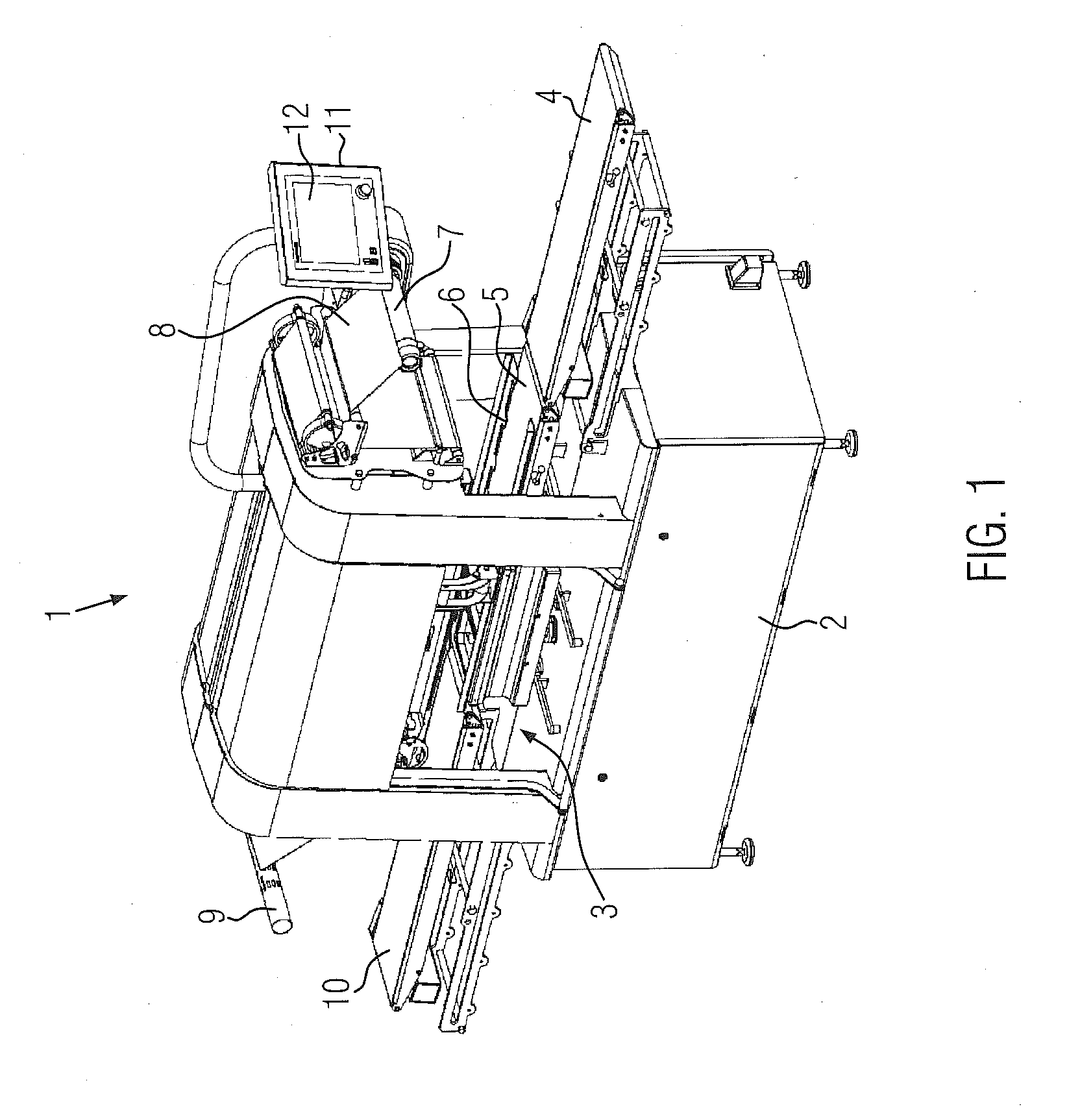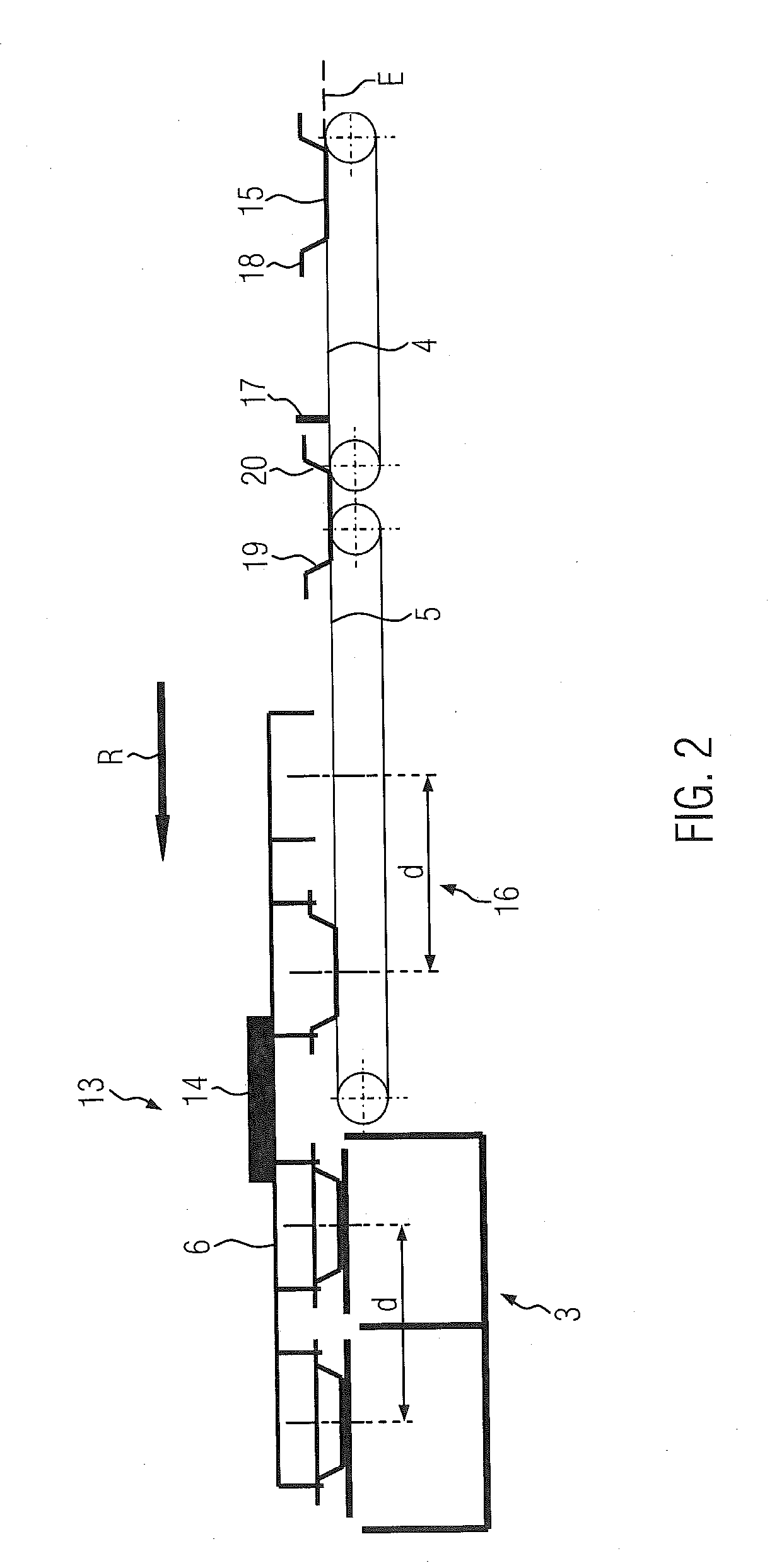Method for automatically teaching parameters
a technology of automatic teaching and parameters, applied in special packaging, biological neural network models, special atmospheric conditions, etc., can solve the problems of positioning errors, inability of the gripper system to grip the trays, and inability to adjust parameters such as belt velocities or belt acceleration by trial and error, so as to increase the performance of the tray sealer
- Summary
- Abstract
- Description
- Claims
- Application Information
AI Technical Summary
Benefits of technology
Problems solved by technology
Method used
Image
Examples
Embodiment Construction
[0044]FIG. 1 shows a perspective view of a tray sealer 1 for operation with a method according to the invention. There is a work station 3 on a frame 2, in the present case, a gassing, sealing and cutting station. A supply belt 4 conveys trays filled with a product (not shown) and transfers them to a collection belt 5 on which the trays are positioned at a predetermined distance in a pickup location in order to be transferred by grippers 6 from the collection belt 5 to the work station 3. A top film 8 is drawn from a film dispenser 7 and likewise guided into the work station 3.
[0045]After evacuation and / or gassing of the trays with an exchange gas (MAP), the trays are sealed in an airtight manner with the top film 8. Subsequently or simultaneously, a cutting tool cuts out the trays from the cover film 8, thus separates the trays. The residual film lattice of the top film 8 is wound on a residual film winder 9. The sealed trays are placed on a discharge belt 10 after they have been c...
PUM
 Login to View More
Login to View More Abstract
Description
Claims
Application Information
 Login to View More
Login to View More - R&D
- Intellectual Property
- Life Sciences
- Materials
- Tech Scout
- Unparalleled Data Quality
- Higher Quality Content
- 60% Fewer Hallucinations
Browse by: Latest US Patents, China's latest patents, Technical Efficacy Thesaurus, Application Domain, Technology Topic, Popular Technical Reports.
© 2025 PatSnap. All rights reserved.Legal|Privacy policy|Modern Slavery Act Transparency Statement|Sitemap|About US| Contact US: help@patsnap.com



